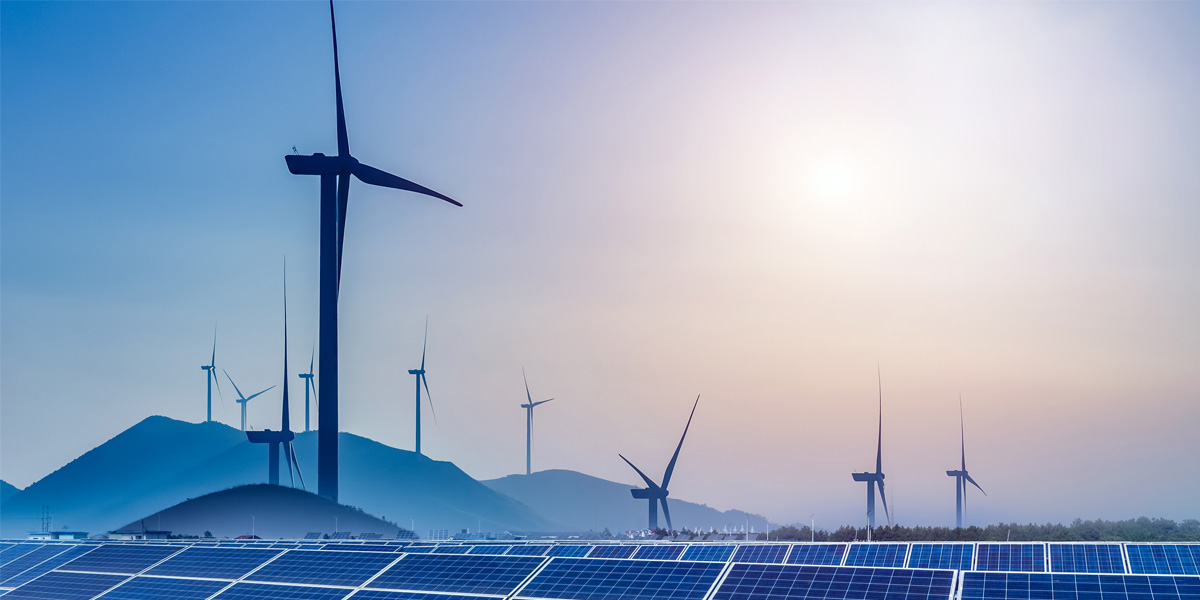Global demand for environmentally responsible power and technology solutions has fueled significant growth in the cleantech industry within the last few years. India, in particular, is seen as a more desirable destination for environment-friendly investments, given its booming economy and appetite for clean power to secure energy consumption and reduce pollution.
With billions worth foreign direct investments, India represents a key market for clean technology. The country is expected to grow its renewable energy capacity to 192.1 GW by 2023. Here’s a glance at some of the growth drivers, challenges, and key trends impacting the proliferation of clean technologies in this market.
Growth drivers
Exponential economic growth
During the financial period spanning 2015-2018, India became one of the fastest-growing economies. Ever since accelerated economic growth, coupled with the demand for clean power and government support, is making India an attractive target for eco-friendly investors.
Government commitments and regulations
The Indian government is committed
to amplifying the use of clean energy sources and the promotion of green energy
concepts. It has already undertaken a few large-scale sustainable power
projects which will create many employment opportunities at every level. The
government is also making efforts to achieve 40% of its power installed
capacity from natural resources and reduce its emissions intensity of its GDP by
33-35% by 2030. As a part of the Paris Agreement commitments, the government
has set a target of achieving 175 GW of renewable energy capacity by 2022.
Investments and developments
Rising urbanization, the effects of
climate change, and depleting non-renewable resources are continuously driving
the need and investments in clean technology. Few investments and developments
in the Indian renewable energy sectors are:
- The world’s largest solar park ‘Shakti Sthala’, with a capacity of 2000 MW, was launched in March 2018 in Karnataka having an investment of INR 165 billion (USD 2.3 billion).
- Private equity investments in India’s wind and solar power have increased to INR 60,000 million (USD 836 million) in 2017.
- In March 2018, ReNew Power has finalized a deal at INR 60,000 million (USD 836 million) to acquire Ostro Energy.

Challenges
Making renewable sources reliable
Unreliability of renewable sources such as solar or wind make investments hard.
These sources cannot be trusted to generate mammoth amounts of electricity
without the ability to store surplus quantities for later usage. Moreover, these
sources have limited capacity to scale and cannot contribute to the amount of
energy that the world requires today.
Installation and developmental cost
One of the biggest challenges associated with renewable energy development is its high initial cost of installation, especially when it comes to harnessing solar and wind energy. Furthermore, this also warrants proper system planning and integration. Additionally, the costs associated with further research and technological development of these projects are considerably high.
Key trends
National solar
mission
Launched in 2010, the government initiated the Jawaharlal Nehru National Solar
Mission (JNNSM), which aims to promote ecologically sustainable growth while
addressing India’s energy security challenge. In June 2015, Indian Prime Minister
Narendra Modi approved ramping up of the country’s solar power capacity target
under the JNNSM to reach 100 GW by 2022. Under this mission, various incentives
such as zero import duty on capital investments and raw materials and low-interest
rates and priority lending sector have been set up for 2022.
Skill development
Solar and wind energy sectors in India are expected to create over 0.3 million
jobs by 2022. In order to meet the
rising demand for trained manpower, a target of 50,000 ‘Suryamitras’ of skilled
manpower in the solar energy sector has been set for the period of 2019-2020.
Green energy corridor
India has received INR 75.26 billion (USD 1.05 billion) of a soft loan is from the German Development Bank for the implementation of green corridor projects. This aims to improve the sector framework and conditions for grid integration of renewable energies with conventional power grids. Through this soft loan, 40% of intrastate and 70% of interstate transmission schemes will be funded.
Decentralized solar power
Providing electricity to all has become a major action point for the government of India. It includes all households, villages of urban areas and slums, which are currently not part of the grid or centralized distribution. There are a few cleantech companies that have used standardized packages to get the slum people to move from kerosene to solar power. For instance, Pollinate Energy markets and sells renewable energy lanterns and stoves on a five-week, interest-free payment plan to families living with bare-minimum necessities in the slums of Bengaluru.
For an in-depth market competitive analysis and investment research on the Indian cleantech market, contact info@netscribes.com






